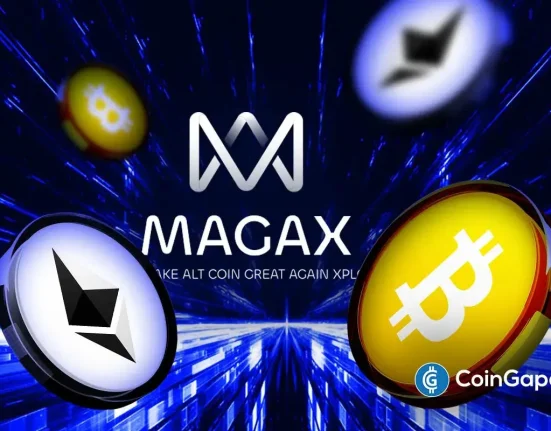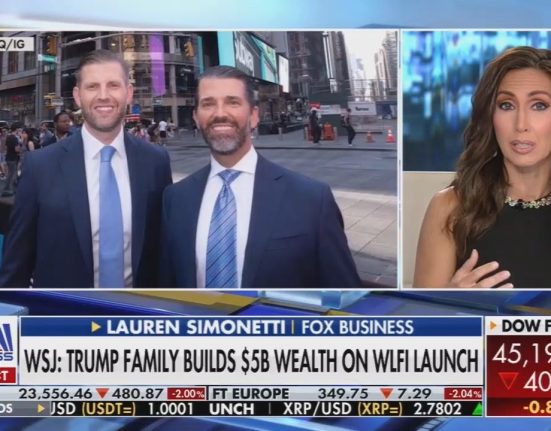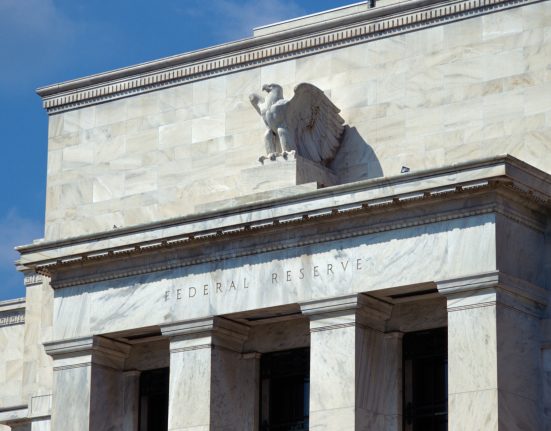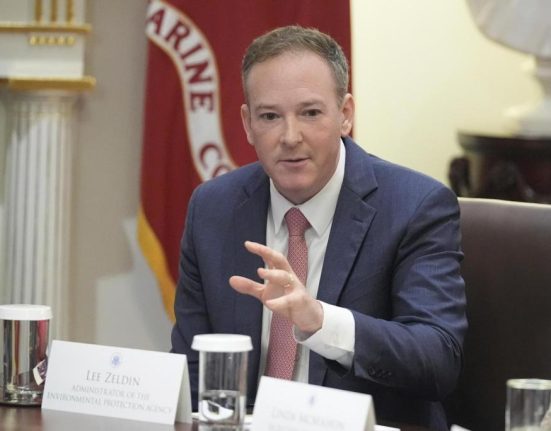Hello readers. If there is one thing US President Donald Trump obsesses over even more than the size of crowds at his rallies, it is the level of investment pledges he has secured from companies and countries.
The White House maintains a running list of the president’s second-term deals on a webpage entitled “Trump effect”. The commander-in-chief recently claimed that commitments had already exceeded $10tn, supposedly proving that his plans to spark a tariff-driven manufacturing boom in America will pay off. This week, I stress-test his claims.
The White House’s list is undoubtedly impressive. However, the $10tn figure — which Trump cited early last month — is misleading.
For starters, in mid-May, Goldman Sachs estimated that companies had announced plans to invest over $2tn across multiple years, with foreign governments pledging in excess of $4tn. That comes to a still chunky number of at least $6tn — roughly 20 per cent of the US economy. (Further commitments have also been made since Goldman’s analysis.)
The cumulative value of total greenfield foreign direct investment announcements — which captures capital earmarked for new facilities and operations — is also already well ahead of where it was at the equivalent point in both Trump’s first term and Joe Biden’s administration, according to data from fDi Markets, an FT-owned database.
But how much of all this will actually happen?
First, pledges are, of course, not the same as realised investments. It is typical for companies and countries to announce projects early in a president’s term to curry favour with their administration.
Looking at promises made during Trump’s first term, Goldman Sachs estimates that 80 per cent of investment commitments actually materialised. Though solid, that did include some high-profile projects falling short of their goals. Alibaba scrapped a plan unveiled in January 2017 that was slated to create 1mn jobs. Foxconn watered down a manufacturing investment plan in Wisconsin from $10bn to only $672mn.
The incentive to embellish investment plans is even stronger in Trump’s second term, given his broad tariff threats. “The US’s partners have a record going back to the 1980s of allaying trade tensions and US concerns by committing direct investment,” notes Matt Gertken, a chief strategist at BCA Research. “After reviewing the major items on the White House list, we find that many of them are indeed hyperbolic and meant for political effect.”
This is supported by data from fDi Markets. The group also tracks signals that a foreign company may be considering investment, such as a new investment strategy. It finds that signals to invest in the US, as a share of all global signals made by businesses, have jumped to their highest in well over a decade so far this year.
This suggests an 80 per cent conversion rate is highly unlikely.
But the White House’s tally is deceptive in other ways too, according to analysis by the Cato Institute. “The list includes previously planned projects that are already under way,” says Scott Lincicome, vice-president at the think-tank. “Other items have classic wiggle room, such as ambiguous timeframes, or are conditioned on the economic environment.”
Some of the larger commitments are indeed curious. Apple has promised to invest $500bn in the US over the next four years. Yet it only spent $10bn on capital expenditure and $31.4bn on research and development globally last year, notes Goldman Sachs. Nvidia’s $500bn commitment is similarly dubious.
For companies, the chasm between promised and current investment suggests the headline-grabbing figures could be bolstered by partnerships, acquisitions or costs of production. As for promises from countries, both Saudi Arabia and Qatar’s “deals” includes purchasing US goods, which boosts American exports, not investment.
This raises a broader point: big investment numbers do not necessarily translate into GDP or job gains.
Tellingly, the investment announcements have not driven significant upgrades to capital expenditure expectations at a company level. Close to 70 per cent of Goldman Sachs’ equity analysts who cover companies with recent investment promises say the pledges mostly overlap with prior plans.
“The consensus forecasts for investment and economic growth have not changed in response to these announcements”, says Mark Zandi, chief economist at Moody’s Analytics. “If anything, the fundamental drivers of investment have weakened considerably because of the global trade war.”
Whether they are genuinely new investments or not, many projects are likely to be scuppered because of uncertainty. Indeed, BCA Research’s indicator of business investment intentions across the US is in recessionary territory.
Indicatively, America’s construction spending boom, linked to the Inflation Reduction Act and the Chips and Science Act, appears to have peaked. Trump’s well-known dislike of the Biden-era initiatives has created uncertainty around the status of their tax credits and subsidies. Investment under both programmes tapered off as the 2024 election came into close view.
The lack of clarity over tariffs in particular significantly reduces the chances of successfully pulling off any fresh building plans. Import duty rates are subject to the White House’s negotiations with America’s trade partners, and now the courts too.
Relocating manufacturing production involves substantive fixed costs, often at multiples of average gross operating surplus. Rational boardrooms will not risk years of profit by breaking ground on new facilities if tariff rates shift again and render investment less competitive. Across many industries, US production costs are significantly higher than the top three countries currently exporting to the US, according to Goldman’s analysis.
Both Trump’s sector- and countrywide levy plans matter here. For example, car manufacturers weighing up whether to jump the tariff wall need to keep tabs on levies concerning their inputs, such as steel and copper.
Beyond tariffs, there are other limiting factors. Over two-thirds of manufacturing businesses considering producing more goods in the US cite the availability of qualified labour as a significant concern, according to a recent Bank of America Global Research survey.
The administration’s broader assault on universities and research risks undermining access to high-skilled workers, while a clampdown on undocumented migrants would hit the construction labour force. Permitting processes are also notoriously slow.
And then there is Section 899, a provision in Trump’s One Big Beautiful Bill Act that would give the Treasury secretary the power to set retaliatory taxes on inbound foreign investment. The Tax Foundation estimates that over 80 per cent of current US FDI stock comes from nations covered by the legislation.
All said, the obstacles to completing any proposed factory build, product launch or hiring spree during Trump’s second term are unprecedented. And, even if projects do occur, they may not deliver the desired results.
Maurice Obstfeld, a senior fellow at the Peterson Institute for International Economics, looked at consumer goods company Kimberly-Clark’s $2bn pledge last month, which he says is linked to a strategic restructuring and cost-cutting plan unveiled a year ago. “While Kimberly-Clark certainly wants to expand its US manufacturing capacity, the new facilities announced appear highly automated and will use high-skilled labour — not necessarily the blue-collar jobs Trump has been promising.”
Indeed, since production costs and labour availability are primary concerns, US reshoring is unlikely to drive significant employment. “Those companies that do end up reshoring are likely to offset associated costs via increased automation”, adds BofA Global Research.
Trump is not alone in overegging investment pledges. Most presidents do it. The Biden-Harris White House touted over $1tn in private sector commitments, even though many projects have been delayed or paused.
Yet the discrepancy between this current administration’s running list of investment announcements and what actually happens is likely to be one of the most exaggerated, given Trump’s transactional and capricious policymaking.
Net total investment could even look dire by the end of Trump’s second term, if it continues as it has started. Right now, domestic capital expenditure projects are largely on hold or cancelled. Outbound FDI projects may even pick up as companies try to avoid retaliatory measures on the US. Automakers are considering shifting to China, given its stranglehold on rare-earth magnets.
Over time, there is reason to be optimistic. For some companies and nations, announcing plans to invest in the US is a longer-term strategic play to gain exposure to its unrivalled market and technology (even if the conditions aren’t quite right now). “Some pledges suggest a desire to leverage the promise of a future upside to stave off the reality of near-term threats,” says Clayton Allen, US director at Eurasia Group. If policy stabilises, it could catalyse dormant projects.
For now, however, Trump’s investment deals are largely a mirage.
Send your rebuttals and thoughts to freelunch@ft.com or on X @tejparikh90.
Food for thought
The European Central Bank cut interest rates to their lowest level since December 2022 on Thursday. Still, the average interest rate on mortgages in the euro area is expected to increase. Here’s why.
Free Lunch on Sunday is edited by Harvey Nriapia








